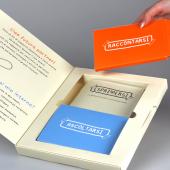Neurosciences and effective communication
During the “Communicating wine: new packaging trends” event, Fiamma Rivetti, neuromarketing researcher at the Behaviour and BrainLab IULM in Milan, illustrated how the study of neurosciences can create favourable conditions for an incisive and persuasive communication.
For marketing agencies, it’s increasingly difficult to develop successful packaging because, as the advertising executive David Ogilvy says, “consumers don’t think what they feel, don’t say what they think and don’t do what they say”. 80% of new product launches are destined to fail. This gives rise to the importance of knowing the variables that influence purchasing choices, also because between 85% and 95% of decisions are taken at an unconscious level in the space of a few seconds. 70% of purchasing decisions in a supermarket are based on the vision of the packaging of a product.
Increasing the visibility of a product by 10% means, therefore, increasing the probability of purchase by 35%. 64% of consumers purchase the product that has most attracted their attention: in practice, once we approach the shop shelf, the decision-making process occurs within the space of 4 seconds.
The problem derives from the fact that consumers are habitually exposed to numerous stimuli and, with respect to daily purchases, could see up to 300 different brands as they wander through the supermarket shelves. The role of packaging is, therefore, fundamental: the colour, the shape and the brightness can guide the consumer’s visual behaviour. What is more, the presence of visual elements, such as text and images, help to memorise the brand better. When developing the design of a label for a bottle of wine, it’s useful to remember that, for us westerners, reading takes place from top to bottom on a vertical line. Care should therefore be taken with conceptual and abstract designs, because they require greater attention on the part of consumers.
It is also essential to identify the target - men and women, more or less expert - to understand what information to insert on the label. For example, men don’t take into consideration all the available information, but select only a part. Packaging is strongly associated with the anticipated quality of the product. It can not only contribute to attracting attention, but can influence expectations and even contribute to the perception of the taste of that product. One study suggests that red and black labels raise expectations towards a sourer flavour, while orange and red ones seem to suggest more fruity and flowery fragrances for the same wine.
Besides images, the text is also very important, as words activate in the brain areas linked to different emotions.

















